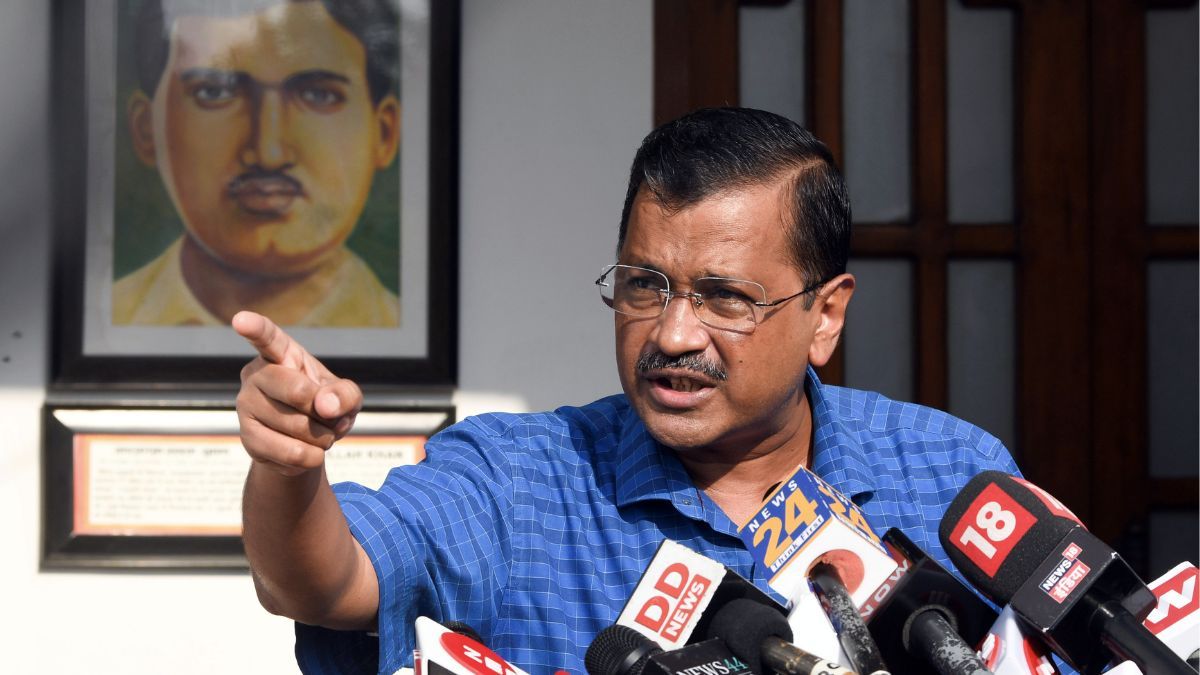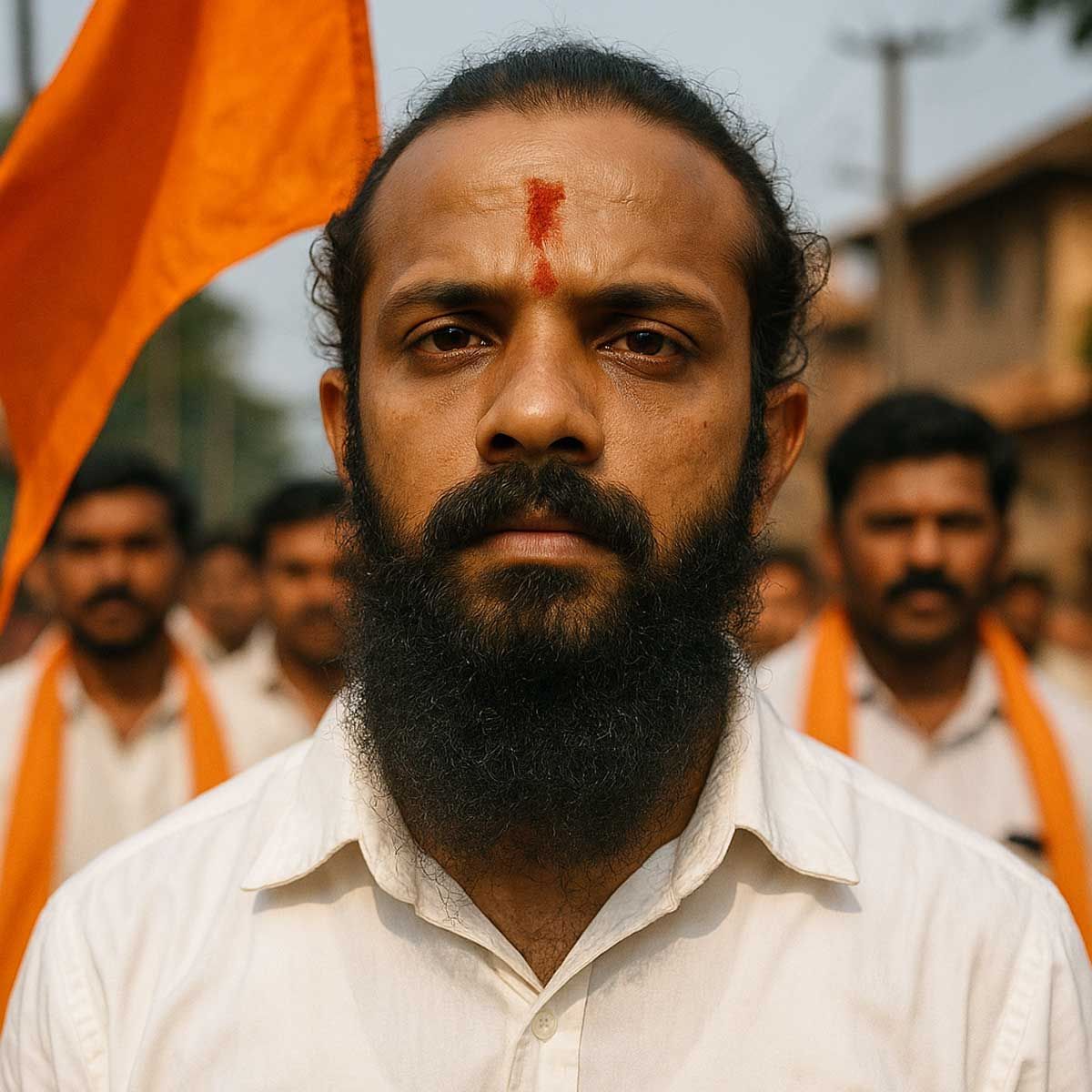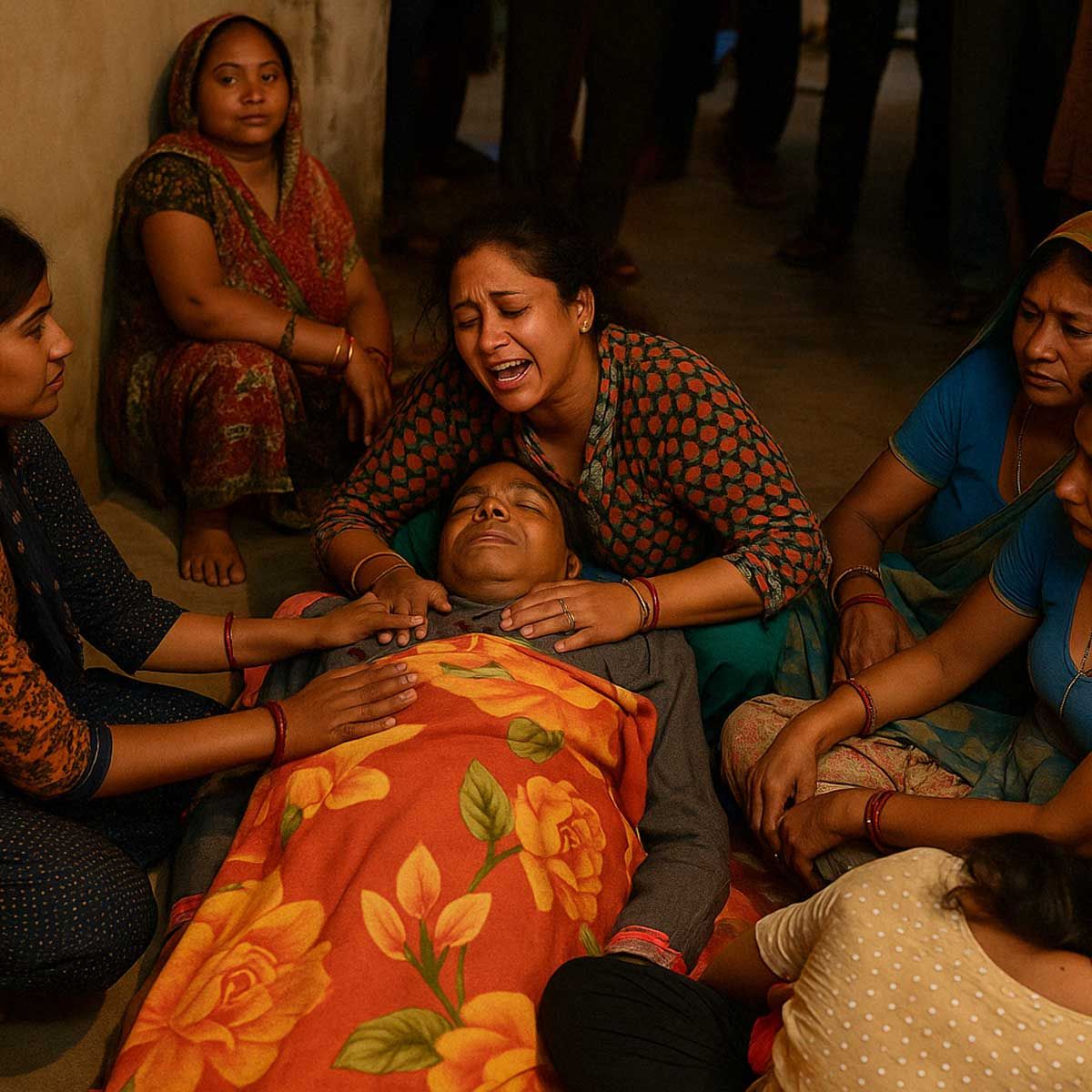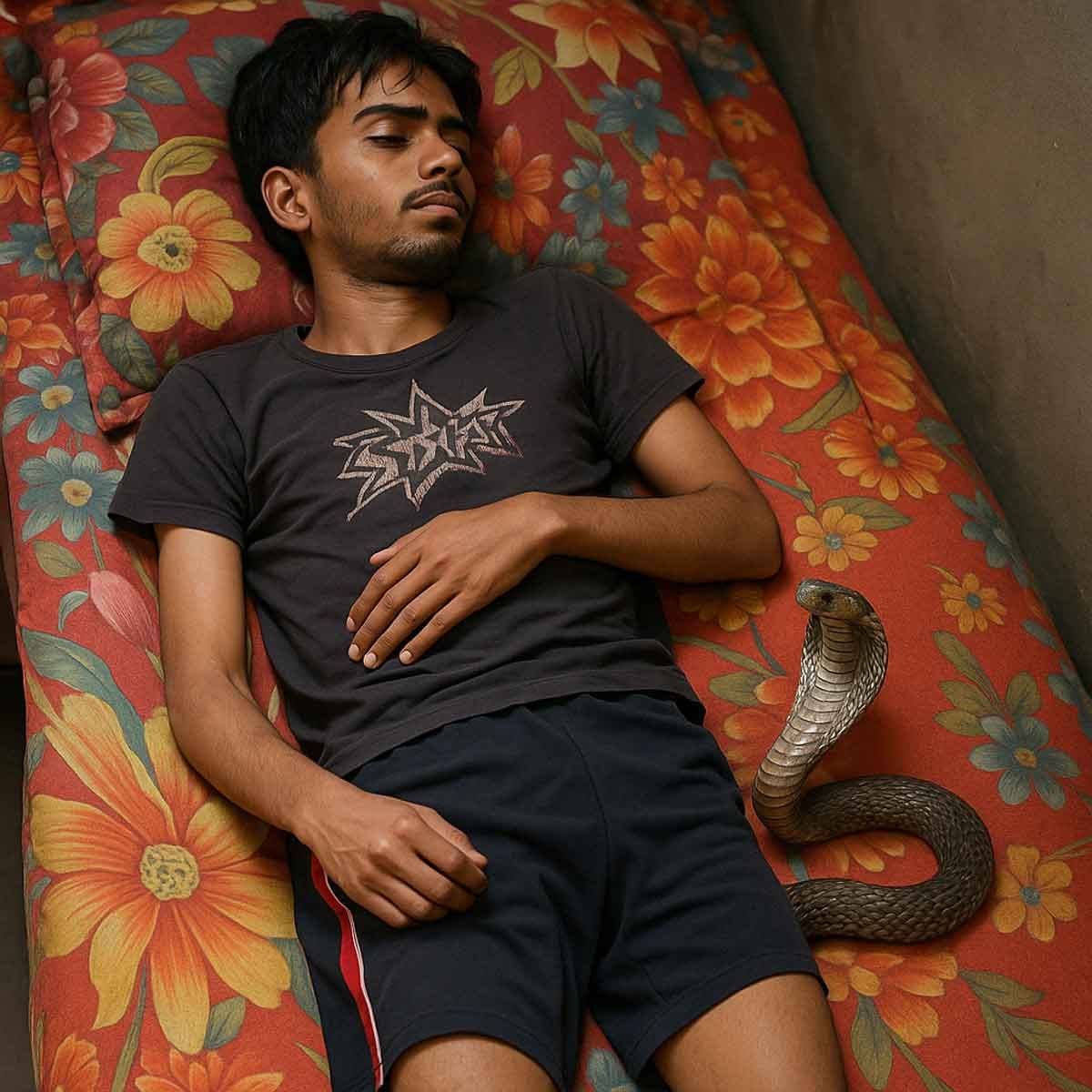More Coverage
Twitter Coverage
Satyaagrah
Written on
Satyaagrah
Written on
Satyaagrah
Written on
Satyaagrah
Written on
Satyaagrah
Written on
JOIN SATYAAGRAH SOCIAL MEDIA
"मैं केजरिवाल बोल रहा हूँ": In a cinematic turn, Delhi's own anti-corruption crusader, Chief Minister Arvind Kejriwal, lands in the net of the Excise Policy scam, joining comrades Sisodia and K Kavitha, in a plot twist that even Bollywood couldn't script

In a surprising turn of events, Delhi Chief Minister Arvind Kejriwal has decided to retract his Supreme Court petition that challenged his arrest by the Enforcement Directorate (ED). This decision comes after a series of ignored summonses, with Kejriwal having bypassed not one, but nine invitations from the ED before his eventual arrest last night. The arrest is connected to accusations surrounding a controversial liquor policy scam, putting Kejriwal at the center of a legal and political storm.
|
Arvind Kejriwal's legal representation, AM Singhvi, who is not only a prominent figure in the Congress party but also a seasoned lawyer, brought this retraction to the Supreme Court. In front of a bench led by Justice Sanjiv Khanna, Singhvi elucidated the reasoning behind their decision to withdraw the petition. The core of Singhvi's argument was the potential conflict that the Supreme Court petition might have with the ongoing remand proceedings. He highlighted a scenario where "Otherwise there will be arguments of remand and then High Court and then.." indicating a possibly complicated legal battle across different levels of the judiciary, which they aimed to avoid.
Acknowledging the complexities and the rationale presented by Singhvi, Justice Sanjiv Khanna consented to the withdrawal of the petition. He suggested that Kejriwal's legal team could pursue their grievances and legal strategies through the lower courts instead. This guidance opens a new chapter in Kejriwal's legal journey, steering it away from the apex court of the country to a different, perhaps more procedural, battleground.
This development raises several questions about the legal strategies employed by high-profile individuals when confronted with judicial proceedings. By withdrawing from the Supreme Court, Kejriwal and his legal team are possibly looking for a more favorable or straightforward venue to contest the accusations against him.
|
What Did AM Singhvi Do When He Mentioned ‘Remand Hearing’ in the Supreme Court
The scenario surrounding Arvind Kejriwal's petition against his Enforcement Directorate (ED) arrest took an unexpected turn in the Supreme Court. After initially seeking a very urgent, almost midnight hearing from the highest court in the land, Kejriwal, through his legal representative, AM Singhvi, decided to withdraw the petition. This decision might come across as puzzling at first glance, especially given the urgency previously shown in trying to get the Supreme Court's intervention.
The logic behind this move is rooted in a deep understanding of legal procedures and strategies. AM Singhvi's reference to a “remand hearing” is key to unraveling this strategy. But what does this term mean, and why is it so significant in this context?
To put it simply, after an individual is arrested by the ED or any other agency, the next step involves presenting the accused to a district court. The purpose of this presentation is to seek remand for the accused. This court session is what is referred to as a remand hearing. During this hearing, the agency that made the arrest explains the reasons behind their actions. Based on the agency's explanations and the evidence presented, the court then decides on the type of remand suitable for the accused. This could either be a judicial remand, where the accused is placed in jail under judicial custody; a police remand, where the accused remains in police custody; or a remand back to the agency, depending on what the court finds most appropriate.
When Singhvi talked about the petition “clashing with remand,” he was highlighting the potential legal conflicts that might arise due to simultaneous proceedings in the Supreme Court and the district court. By mentioning “remand hearing,” Singhvi specifically pointed to the upcoming session in the district court where Kejriwal would be brought forward by the ED to seek remand following his arrest connected to the alleged liquor policy scam.
|
Why Did Arvind Kejriwal and His Legal Team Decide to Take Their Chances in the District Court Instead of the Supreme Court?
Navigating through the complexities of the legal system is more than just presenting facts and arguments in a courtroom. An essential aspect that seasoned lawyers consider is the court's historical response to similar cases. This strategic consideration played a pivotal role in the decision-making process for Arvind Kejriwal and his legal team regarding where to contest his case following his arrest related to the alleged liquor policy scam.
A significant event on 22nd March shed light on the Supreme Court's current stance towards cases involving allegations of corruption against politicians. The court unmistakably signaled its reluctance to offer leniency to politicians embroiled in corruption cases. This was evident when the Supreme Court, on the very same day, refused to grant relief to Bharat Rashtra Samithi leader K Kavitha, who was arrested in connection with the same case as Kejriwal.
The decision to reject Ms. Kavitha's plea for relief was made by the same bench that was set to hear Arvind Kejriwal's petition. This bench, comprising Justice Sanjiv Khanna, Justice MM Sundresh, and Justice Bela Trivedi, made it clear that seeking immediate Supreme Court intervention without first going through the lower courts was not a viable option, even for high-profile individuals like senior political figures or a Chief Minister.
The bench's directive for Ms. Kavitha to seek relief, including bail, from the trial court was a clear indication of the Supreme Court's approach to such matters. This precedent was crucial in shaping Kejriwal's legal strategy. Rather than pursuing a direct appeal to the Supreme Court, where recent decisions suggested a dim view of bypassing lower courts, Kejriwal and his team opted to present their case in the district court.
|
An interesting twist in the narrative involved lawyer Kapil Sibal, who, while representing a similar case, made a bold statement to the Supreme Court, suggesting that history might judge the court harshly for its decisions in these cases. However, the bench responded firmly to Sibal's dramatic assertion, reinforcing their stance that the appropriate course of action was to seek relief through the lower courts.
This series of events and judicial attitudes underscore why Arvind Kejriwal and his legal team decided to redirect their efforts towards the district court. The Supreme Court's clear message on 22nd March, along with its reaction to similar cases, highlighted the strategic necessity of pursuing justice through the established hierarchical judicial process, starting with the lower courts.
In a remarkable coincidence, the bench that had previously refused relief to K Kavitha, another politician arrested in the same liquor policy scam, was also scheduled to review the petition filed against Arvind Kejriwal's arrest. This scenario presented a significant insight into the probable outcomes for Kejriwal's plea in the Supreme Court.
Understanding the gravity of the situation and the precedent set by the Supreme Court's recent actions, Arvind Kejriwal came to the realization that the likelihood of the Supreme Court granting him relief from arrest was minimal. This understanding stemmed from the court's decision regarding K Kavitha, who was embroiled in the same legal battle as Kejriwal. The denial of relief to Kavitha was a clear indicator of the court's stance, suggesting a consistent approach towards cases of this nature.
Given these circumstances, it was a strategic move on part of Kejriwal and his legal team to withdraw the petition from the Supreme Court. This decision was driven by a realistic assessment of the situation, acknowledging that the Supreme Court's recent precedent indicated a probable refusal to grant Kejriwal any form of relief.
Another layer of complexity in this legal strategy involves the role of the Enforcement Directorate (ED) in this case. The ED, tasked with fighting Kejriwal's petition, was expected to present substantial evidence linking Kejriwal to the liquor scam. The anticipation of the ED revealing compelling evidence against Kejriwal in the Supreme Court posed a significant risk. It raised concerns about the potential early exposure of facts detrimental to Kejriwal's case and the Aam Aadmi Party's (AAP) political narrative. Opting to withdraw from the Supreme Court, Kejriwal's team aimed to mitigate the immediate risk of damaging revelations, preserving their strategy and narrative for a more controlled environment.
In light of these considerations, Arvind Kejriwal's legal battle will now transition to the district court. This move to challenge the arrest at a lower judicial level, where Kejriwal will be produced for remand by the Enforcement Directorate, represents a calculated shift in legal tactics.
|
|
Details of the Liquor Scam in which K Kavitha and Arvind Kejriwal Have Been Arrested
The controversy surrounding the Delhi Excise Policy 2021-2022 has led to the arrest of significant political figures, including K Kavitha and Arvind Kejriwal. This policy, initially proposed in September 2020, only came into effect in November 2021, introducing a radical shift in the sale of alcohol in the National Capital. For the first time, the policy opened the market to private players and signaled the withdrawal of government-run liquor shops.
Under this new policy, Delhi was strategically divided into 32 zones, with each zone accommodating a total of 27 private vendors. This meant that in every municipal ward, residents would find 2-3 liquor stores, enhancing accessibility and convenience. Moreover, the policy proposed innovative changes such as the home delivery of liquor, permission for liquor vendors to offer unlimited discounts, and the extension of store operating hours until 3 am. These proposals were presented to the Delhi Cabinet for approval.
The implementation of the Delhi Excise Policy 2021-2022 led to a significant 27% increase in government revenue, amounting to ₹8900 crores. This increase was a testament to the policy's impact on the liquor market in Delhi, simultaneously marking the government's complete exit from the liquor business. While the policy aimed to eradicate black marketing and dismantle the liquor mafia, it soon became embroiled in controversies over alleged corruption.
The Chief Secretary of Delhi, Naresh Kumar, discovered irregularities and procedural lapses within the new liquor policy framework. Acting on these findings, Lieutenant Governor VK Saxena initiated a CBI probe, following the recommendation from Naresh Kumar. A particularly contentious decision involved Manish Sisodia waiving off a substantial license fee of ₹144.36 crores, which was owed by private liquor vendors, citing the Coronavirus pandemic as justification.
|
This waiver not only led to a significant loss for the Excise Department but also unduly favored the liquor licensees by eliminating the import pass fee of ₹50 per beer case. Crucially, these changes were implemented without the final nod from the Lieutenant Governor, rendering them illegal under the stipulations of the Delhi Excise Rules of 2010 and the Transaction of Business Rules of 1993.
The controversy surrounding the Delhi Excise Policy 2021-2022 escalated significantly in July 2022 when the Delhi government decided to retract its newly established excise policy. This policy, which had introduced significant changes to the liquor market in the National Capital, became the center of a sprawling corruption investigation. The Central Bureau of Investigation (CBI) subsequently lodged a First Information Report (FIR) against Manish Sisodia, the former CEO of Only Much Louder (OML) Vijay Nair, and 13 others, citing "irregularities" in the policy's implementation.
February 2023 saw the arrest of Manish Sisodia, a pivotal moment that underscored the gravity of the accusations related to the excise policy. This event was followed by the arrest of Arvind Kejriwal, the Chief Minister of Delhi, on 21st March 2024. Kejriwal, who had prominently positioned himself as an anti-corruption advocate, faced the stark irony of being apprehended over corruption charges. This marked a significant turn in the narrative for the Aam Aadmi Party (AAP) leader, who had previously been vocal in his crusade against corrupt practices.
The saga further unfolded with the arrest of Bharat Rashtra Samithi (BRS) leader K Kavitha. The action against Kavitha came after raids by the Income Tax Department and the Enforcement Directorate at her residence in Hyderabad, unveiling her alleged involvement in the excise policy scam. The enforcement agencies have identified Kavitha as a key figure within the 'South Cartel', a group allegedly tied to receiving payments connected to the scandal. This revelation came to light following the arrest of Sisodia, drawing Kavitha into the vortex of the investigation.
These arrests and the investigation into the Delhi Excise Policy have cast a shadow over the involved parties, bringing to light the intricate and often hidden dynamics of political and financial wrongdoing. The case continues to unravel, revealing the complexities of governance, policy-making, and the enforcement of law in the face of alleged corruption.
 Support Us
Support Us
Satyagraha was born from the heart of our land, with an undying aim to unveil the true essence of Bharat. It seeks to illuminate the hidden tales of our valiant freedom fighters and the rich chronicles that haven't yet sung their complete melody in the mainstream.
While platforms like NDTV and 'The Wire' effortlessly garner funds under the banner of safeguarding democracy, we at Satyagraha walk a different path. Our strength and resonance come from you. In this journey to weave a stronger Bharat, every little contribution amplifies our voice. Let's come together, contribute as you can, and champion the true spirit of our nation.
 |  |  |
| ICICI Bank of Satyaagrah | Razorpay Bank of Satyaagrah | PayPal Bank of Satyaagrah - For International Payments |
If all above doesn't work, then try the LINK below:
Please share the article on other platforms
DISCLAIMER: The author is solely responsible for the views expressed in this article. The author carries the responsibility for citing and/or licensing of images utilized within the text. The website also frequently uses non-commercial images for representational purposes only in line with the article. We are not responsible for the authenticity of such images. If some images have a copyright issue, we request the person/entity to contact us at This email address is being protected from spambots. You need JavaScript enabled to view it. and we will take the necessary actions to resolve the issue.
Related Articles
- Kumar Vishwas arrest stayed by Punjab & Haryana High Court over statement highlighting Kejriwal’s compromise for power in Punjab by siding with Khalistani separatists
- "One leak will sink a ship: and one sin will destroy a sinner": Hindus protest to stop demolition of old Shani-Hanuman temple, Kejriwal sent team to demolish a temple issuing orders by PWD Delhi in Mandawali after the complaint by Javed, Mansoor, Naushad
- "Tragedy is a tool for the living to gain wisdom, not a guide by which to live": Delhi - Massive fire breaks out in Mukherjee Nagar's Coaching Center, brave students escape through windows climbing down using wires, this calls for audit of such buildings
- Ahead of the upcoming elections in states AAP making a ton of promises to lure voters to secure a win at any cost: How ‘free electricity' and ‘free money‘ lollipop by Kejriwal puts a high cost on the public
- 50 Punjab policemen in 10-12 cars came to Delhi and arrested BJP leader Tajinder Pal Singh Bagga, assaulted the leader's father: Did not even let Bagga put on his turban even after several requests
- "Liquor Scam": CBI dives deep into Delhi's excise policy scandal involving ED's Asst Director Pawan Khatri, liquor magnate Aman Dhall and others, a tale of bribes, covert meetings & policy shakeup, revealing the dark underbelly of Delhi's power corridors
- "For some, their dignity is like a needle in a haystack - notoriously hard to find": ₹1100 crore on ads but not enough funds for the Delhi-Meerut RRTS project? Seems Kejriwal's government might have mistaken rapid transit for rapidly increasing publicity
- In a twist befitting a Bollywood plot, AAP MP Raghav Chadha, fresh from his lavish wedding with starlet Parineeti Chopra, finds his sprawling Lutyens bungalow snatched away, from palace to pared-down pad, it seems not all fairy tales has storybook endings
- Khalistani terrorist Narain Chaura, mastermind of the Burail jailbreak with Babbar Khalsa links, tried to assassinate Sukhbir Badal at Golden Temple, but Punjab Police foiled it, sparking outrage, demands for an NIA probe into Punjab’s rising extremism
- "झूठ बोले कौआ काटे": Supreme Court lambasts Kejriwal Govt for failing to tackle Delhi's water crisis and the tanker mafia, while AAP shifts blame to Haryana for withholding Delhi's water & accuses LG VK Saxena of lying, deepening the capital's water woes
- Chartered flight for AAP supremo Arvind Kejriwal and Bhagwant Mann’s trip to Gujarat for launching political campaign cost Rs 45 lakh of Punjab Govt: RTI activist Grewal
- "मुर्दे की जान खतरे में": Delhi's Mohalla Clinics faces a major scam with over 23,000 ghost patients and fake lab tests, LG Saxena slams CM Kejriwal's role, CBI steps in to probe the significant healthcare fraud & corruption in the capital's public system
- "उसकी गलती क्या थी": In a devastating turn, 12-year-old Kintan Saraswat's aspirations to become an IAF officer were crushed under the weight of brutal bullying and grave medical neglect, propelling his shattered family into a relentless quest for justice
- Delhi Govt completes liquor license allotment in all 32 zones under new excise policy; earns ₹8,900 crore
- "जलमग्न": Three IAS aspirants from Kerala, Telangana, and UP perish in a flood at Rau’s IAS Study Circle, Delhi, as heavy rains overwhelm inadequate drainage, with outraged calls for accountability targeting AAP's negligence in infrastructure maintenance




























